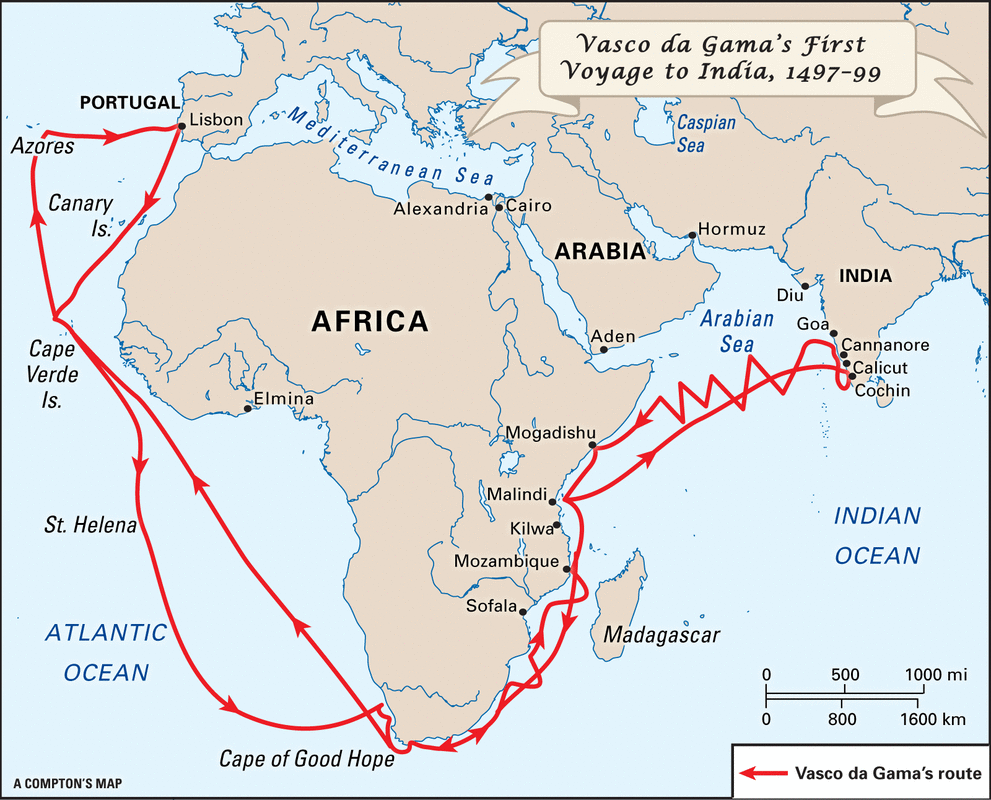

Chapter 6 – The Portuguese Navigator Vasco Da Gama at Calicut and His Reception by the Zamorin 1498 A.D. Home Top menu Table of Contents Previous: Chapter 5 Next: Chapter 7 The Portuguese overseas territory of Portuguese India (Goa) existed for about 450 years until it was annexed by India in 1961.Chapter 6 – The Portuguese Navigator Vasco Da Gama at Calicut and His Reception by the Zamorin

The state of Goa and city of Cochin still exhibits the cultural influence of the Portuguese, who landed in the early 16th century as merchants and conquered it soon thereafter. Vasco contracted malaria not long after arriving in Goa and died in the city of Cochin on Christmas Eve in 1524.

Deathĭa Gama was sent to India again in 1524 to replace the incompetent Viceroy. In this trip he returned triumphant, primarily with silk and gold, and also established settlement of the Portugese people in India.

On this voyage, Da Gama and his troops killed hundreds of Muslims, often brutally, in order to demonstrate their power. On 12 February 1502, da Gama led the 4th Portuguese Armada to India, a fleet of fifteen ships and eight hundred men, with the object of enforcing Portuguese interests in the east. He was given the title ‘Admiral of the Indian Seas.’ Last voyage to India He however received a hero’s welcome and was well rewarded by the king. On Da Gama’s journey back, many of his crew members died from scurvy. Admiral of the Indian Seasĭa Gama arrived in Lisbon in September, 1499. He also took with him hostages, a few Nairs and sixteen Mukkuva fishermen. His expedition beat all expectations after he brought in cargo that was worth 60 times the cost of the expedition. This strained relations between the two.ĭa Gama left India on August 29, 1498. The king ordered him to pay a large tax in gold similar to what other merchants pay. He finally reached Calicut on May 20, 1498.Īt first, da Gama and his trading were well-received, but this only lasted a short while. First voyage to Indiaĭa Gama’a trip to India consisted of several stops along the way in Africa as well as problems faced with Muslim traders who did not want him to interfere in their profitable trade routes. The distance that he and his crew travelled from Africa to India was greater than what it would have been around the equator. On 8 July 1497, Da Gama led a fleet of four ships with a crew of a 170 men from Lisbon. Little is known about Vasco da Gama’s early life, but it is believed that he was a student of mathematics and navigation. Vasco da Gama was born either in 1460 or 1469 in Sines, on the southwest coast of Portugal. Vasco da Gama, was a Portuguese explorer who was commander of the first ships to sail straight from Europe to India.


 0 kommentar(er)
0 kommentar(er)
